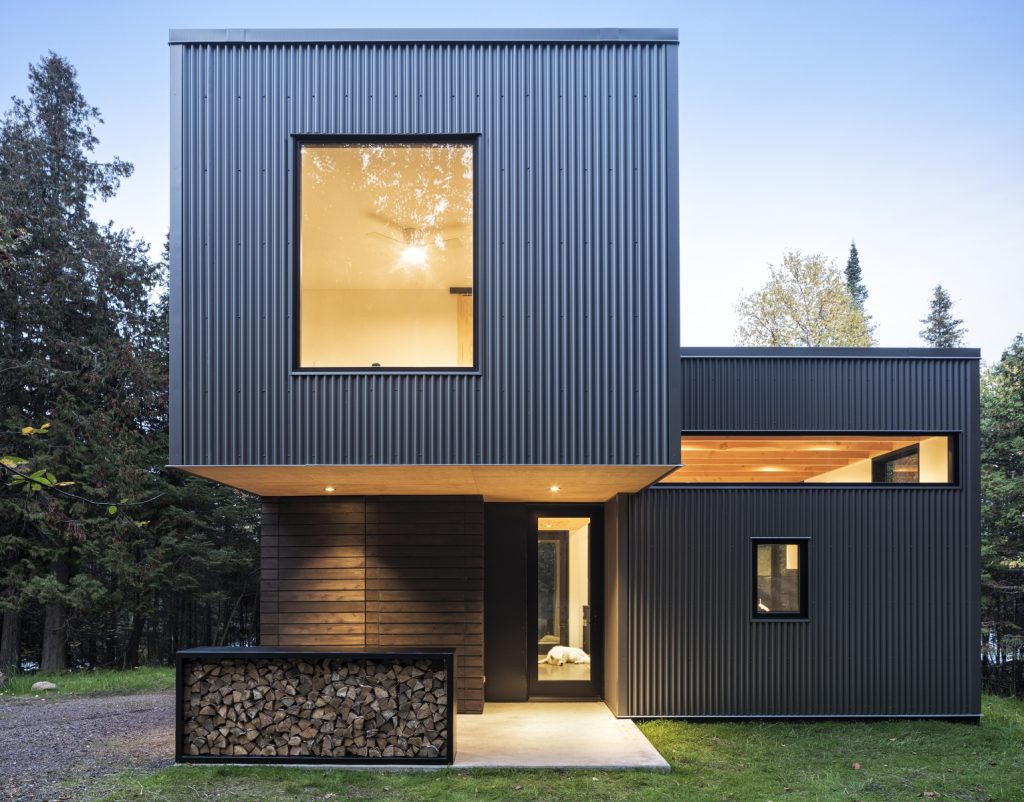Published on: March 24, 2025

Eco-friendly siding options are covered in this comprehensive analysis, helping you find the best products for your next project.
Recycled or repurposed metal siding is an environmentally friendly option. And once steel or aluminum siding is removed from your home, it has good potential for being recycled again.
The material’s ability to be recycled after its use is a major consideration in its eco-friendliness as you evaluate the best materials for your needs.
But while metal siding is generally seen as an environmentally safe option for building owners, it poses some challenges in accomplishing the appearance that some people want.
It is not a modern-looking siding material and lacks some of the flexibility and options for modern appearances that many homeowners want. Metal siding does not have stylized designs.
Additionally, metal siding is prone to dents and chips, making it not stand up to the test of time as well as some other siding materials. For Washington area homes hit hard by intense weather, metal likely isn’t the best option for your needs.
Here’s a review of eco-friendly siding options, focusing on the pros and cons of metal siding in terms of sustainability and other factors.
Pros
Cons

Wood is like the tried-and-true siding material. As a natural element, it is sustainable without adding pollutants to the world during the manufacturing process. You won’t have to worry about plastics, chemical finishes or other unnatural components.
But while the material itself is sustainable without pollutants, the logging process often is not. During logging, forestry initiatives suffer. So if your wood siding isn’t reclaimed wood, it likely still has a cost to the environment.
However, reclaimed wood or timber is salvageable to turn into wood siding so just do your research carefully to learn more about where the wood came from and how the company sources its wood.
Another major consideration with wood siding is its maintenance requirements. Wood does rot and warp without proper care, which means you’ll need to commit to staining or painting it regularly to keep it sealed from the elements. If properly cared for, wood siding can have a long lifespan, which further improves its sustainability because it doesn’t send materials to a landfill or require that homeowners put newly manufactured materials on their homes within 20-30 years.
There’s lots to consider with wood siding. Here’s a breakdown of its major pros and cons to guide you in making an informed decision.
Pros
Cons
Vinyl siding is historically harmful to the environment since it is made with PVC, which releases toxins during manufacturing. However, there has been a major push to control those toxins during manufacturing and improve the process to incinerate them.
The industry is advancing and some manufacturers are introducing recycled materials into the vinyl siding production process.
Some factors in favor of vinyl siding are that it is durable and low maintenance. So while the manufacturing process isn’t particularly eco-friendly, you shouldn’t need to replace the siding for a few decades, which can reduce the environmental impact with time.
Additionally, vinyl siding does not need to be treated with chemicals or paint regularly to care for it, which is another factor in its favor.
As you evaluate the longevity, appearance and maintenance of vinyl siding as an option for your replacement project, review these pros and cons.
Pros
Cons
To properly analyze the eco-friendliness of fiber cement siding, first, you have to understand what it is made from. During manufacturing, fiber cement brings together three natural materials: sand, wood pulp, and as the name implies, cement.
The only material in fiber cement that could pose some environmental concerns is cement because it is energy-intensive. However, the industry is improving and reducing the energy requirements for manufacturing cement.
The manufacturing process does not put harmful chemicals or toxins into the air. Fiber cement holds up well under many environmental conditions, including being very fire-resistant.
It is designed for longevity, meaning you won’t be sending fiber cement siding to a landfill soon after putting it on your home.
Fiber cement siding offers diverse styles and appearances. You can accomplish a classic wood appearance or go with more modern styles, such as board and batten. Many manufacturers also have shake-style siding available.
While fiber cement mimics wood’s appearance, it does not have the same maintenance requirements as wood, making it more attractive to many homeowners.
Furthermore, fiber cement is resistant to pests and rot. That means that you don’t have to apply chemicals to it to protect it, which is another factor in its favor.
Fiber cement poses many considerations when evaluating it as your siding material. Here’s a simpler breakdown of its pros and cons.
Pros
Cons
Weighing the various pros and cons of each siding material is challenging because there is so much to consider. Get help from the experts.
2FL Windows, Siding and Roofing offers in-person estimates to weigh the many factors that homeowners consider when replacing their siding, including budget, eco-friendliness and style.
Schedule your free estimate now to discuss your project and needs with our team of experts.
Further Reading:

Read the latest articles about siding.
